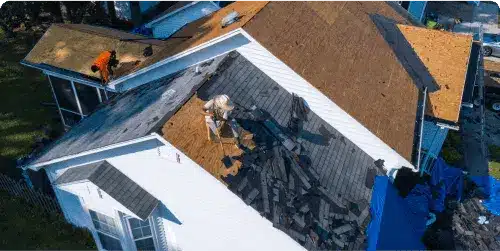Choosing the right dumpster size for your project can feel overwhelming, but it doesn't have to be! This guide breaks down everything you need to know to select the perfect dumpster, ensuring a smooth and efficient waste removal process. Let's dive in!
Why Is Choosing the Right Dumpster Size Important?
Selecting the appropriate dumpster size is crucial for efficient waste management and cost-effectiveness. Renting a dumpster that's too small will lead to multiple trips and added expenses, disrupting your project timeline. Conversely, renting an oversized container is wasteful, costing you more in rental fees than necessary. Accurate waste volume estimation is key to avoiding both scenarios. Careful planning ensures a seamless waste removal process, minimizing disruption and maximizing your budget. Proper waste disposal also adheres to local regulations and contributes to responsible environmental practices. Understanding your waste volume needs is the first step in successfully managing your project’s waste. This includes considering factors like project type, duration, and the types of materials being disposed of. Choosing the right size ultimately saves you time, money and reduces environmental impact.

How Do I Estimate the Volume of Waste I Will Generate?
Accurately estimating your waste volume is paramount. Several methods can help. For home renovations, consider the square footage being remodeled and the type of materials involved (drywall, wood, etc.). Detailed project plans can offer insights into material quantities. For landscaping projects, measure the area being cleared and estimate debris volume per cubic yard. Consult online resources or waste management professionals for guidance on waste generation rates for specific materials. Remember to overestimate slightly to account for unexpected waste. A checklist outlining different materials and their estimated volume per unit can be incredibly helpful. Taking accurate measurements and making realistic estimations will greatly influence the success of choosing the appropriate sized dumpster for your waste removal needs.
What Are Common Dumpster Sizes Available for Rent?
Standard dumpster sizes typically range from 10 to 40 cubic yards. A 10-yard dumpster is suitable for smaller projects, like a small bathroom remodel or a minor cleanup. 20-yard dumpsters handle moderate-sized projects, such as a larger room renovation or a sizable yard cleanup. 30-yard and 40-yard dumpsters are ideal for larger-scale projects, including whole-house renovations, major demolition, and extensive landscaping jobs. Each size offers varying load capacities and dimensions. Consider both the volume and the weight of your waste when making a selection, as exceeding weight limits may incur extra charges. Understanding the range of available sizes enables you to accurately plan your waste removal and ensure efficiency. It's essential to communicate with your dumpster rental provider to understand the specific dimensions and weight limits of each option.
What Size is Suitable for Home Renovation Projects?
For smaller home renovations, like a bathroom or kitchen remodel, a 10-yard dumpster is often sufficient. Larger projects, such as a complete kitchen or addition, might need a 20-yard or even a 30-yard dumpster, depending on the scale and the materials involved. Always overestimate to prevent overflowing, which can lead to additional charges. Remember, you can always add a second dumpster later if you are unsure.
What Size Works Best for Yard Cleanup?
Yard cleanup projects usually require less space than construction projects. A 10-yard dumpster typically suffices for smaller jobs like clearing a small garden. Larger projects such as significant landscaping or post-storm debris removal might require a 20-yard container. Consider the volume of leaves, branches, and other debris when making your assessment. It's always preferable to choose a slightly larger size than a smaller one to avoid potential overflow issues.


Are There Different Dumpster Sizes for Special Projects?
Yes, certain projects generate specialized waste requiring different handling. Hazardous materials like asbestos or chemicals need specific disposal methods and may not be accepted in standard dumpsters. Recycling programs often require separate containers for recyclable materials. Inquire with your waste management provider about options for handling specialized waste to comply with local regulations and ensure safe and responsible disposal. Understanding these requirements beforehand helps in selecting the correct type and size of dumpster needed. Different waste streams need different containers.
What Factors Should I Consider When Choosing a Dumpster Size?
Beyond volume, consider the weight of your waste. Exceeding weight limits results in extra fees. The dumpster's accessibility is crucial; ensure it can be easily placed and loaded at your site. Local regulations dictate permitted waste types and disposal methods. Rental duration and associated costs play a role in your selection. Also factor in the time required to load the dumpster; a large volume may take more time. Choosing the right size requires evaluating several factors beyond just project size. Considering the weight of your waste, the accessibility of the site, the relevant local regulations, https://maps.app.goo.gl/1yDTw27fBv5cXHfT7 the rental time frame, and the loading time are vital aspects of choosing the right dumpster for your project.
Dumpster Size (Cubic Yards) Approximate Dimensions Typical Uses 10 12'L x 8'W x 4'H Small renovations, minor cleanups 20 22'L x 8'W x 4'H Medium renovations, yard waste removal 30 22'L x 8'W x 6'H Large renovations, construction debris 40 22'L x 8'W x 8'H Major renovations, demolition projects
Checklist for Estimating Project Waste:
- Drywall: Square footage x estimated weight per square foot Wood: Cubic footage Concrete: Cubic yards Shingles: Number of squares x weight per square Yard Waste: Cubic yards (leaves, branches, etc.)
Tips for Maximizing Dumpster Space:
- Break down large items to reduce volume. Layer heavier materials at the bottom. Distribute weight evenly. Use the space efficiently by packing items tightly.
FAQ Section
What happens if I underestimate my dumpster size? You'll likely need an additional pickup, incurring extra charges. Can I rent a dumpster for just one day? Rental durations vary; confirm with your provider. What items are prohibited in dumpsters? Hazardous materials, electronics, and certain liquids are typically prohibited. Check with your provider for a complete list. How much does it cost to rent a dumpster? Pricing depends on size, rental duration, and waste type. Obtain quotes from multiple providers.In conclusion, selecting the right dumpster size involves careful planning and consideration of various factors. By accurately estimating waste volume, understanding available sizes, and accounting for additional factors such as weight and local regulations, you can ensure a smooth and cost-effective waste removal process for your project. Contact a local dumpster rental service today to get started!